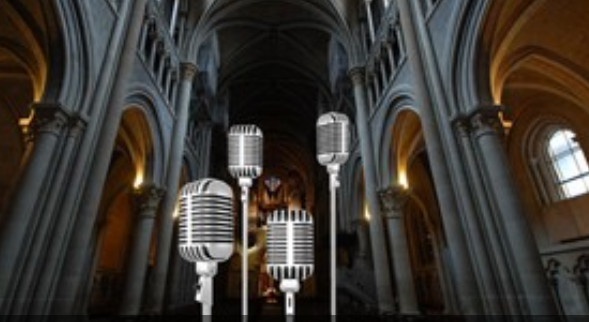How to map a room using only a sound
June 19, 2013

Mapping the Lausanne Cathedral (credit: LCAV/EPFL)
An algorithm developed in EPFL’s School of Computer and Communications Sciences makes it possible to measure the dimensions and shapes of a room using just four microphones and a snap of your fingers.
“Our software can build a 3D map of a simple, convex room with a precision of a few millimeters,” explains PhD student Ivan Dokmanić.
Blind people sometimes develop the amazing ability to perceive the contours of the room they’re in based only on auditory information. Bats and dolphins use the same echolocation technique for navigating in their environment.
The microphones actually don’t need to be carefully placed. “Each microphone picks up the direct sound from the source, as well as the echoes arriving from various walls,” said Dokmanić. “The algorithm then compares the signal from each microphone. The infinitesimal lags that appear in the signals are used to calculate the distance between the microphones and the distance from each microphone to the walls and the sound source.”
This ability to “sort out” the various echoes picked up by the microphones is in itself a first. By analyzing each echo’s signal using “Euclidean distance matrices,” the system can tell whether the echo is rebounding for the first or second time, and determine the unique “signature” of each of the walls.
Architects could use this to design rooms — for example concert halls or auditoriums — based upon the specific acoustics they would like to create.
Analyzing a telephone call from a person who is moving around a room could allow investigators to identify where in the room the person is calling from, or even what objects are in the room..